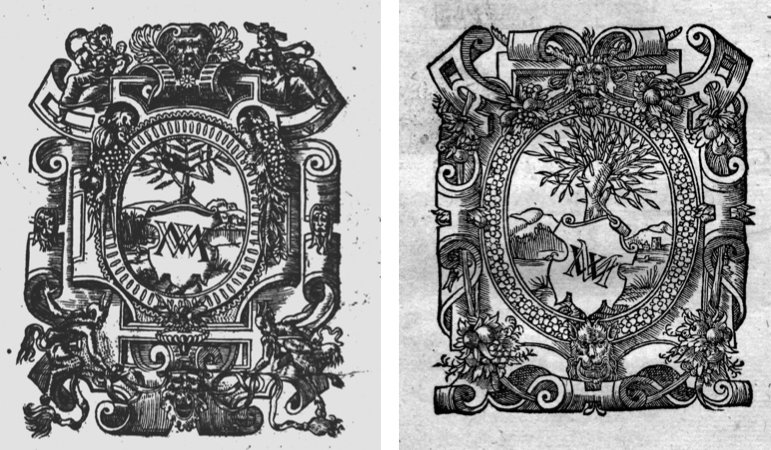Maciej Wirzbięta was the owner of a publishing house in 16th Century Krakow which printed some of the most beautiful books in its day.
Born in 1523 to a burgher family (part of the wealthy and privileged class), he adopted Calvinistic theological beliefs following extensive studies which would shape the rest of his personal and professional life.
Well-known among the Cracovian upper class for his work as a lay judge (from around 1574 onwards), his fellow believers also entrusted him with an administrative office among the elders of a Reformed Church. Wirzbięta would also become an elder in the church in 1570.
Wirzbięta was skillful, ambitious, and entrepreneurial. He travelled throughout Poland and abroad, and would accumulate a great deal of wealth. He was the owner of not only a printing house at Sławkowska Street, Krakow (just off the historic main square), but also a garden with a pond in Czarna Wieś (now a public garden), two houses with gardens in Piask, and the Szykiwowskiego farm in Łobzów. In 1555 he invested in his own printing equipment and opened his own printing house.
1557 would see the beginning of a collaboration between Wirzbięta and the famous Polish poet and writer Mikołaj Rej, which would prove to be a profitable partnership. Not only would Wirzbięta gain a great author for his publishing house, and Rej, in turn would find his own publisher; but they were also fellow Reformed believers. This collaboration and partnership between Rej and Wirzbięta would create beautifully published books which were well-received. Their partnership gained them a position in Polish printing heritage as a model publisher-author pair. Both had deep convictions held in common and their bond of Christian fellowship seemed to be as strong as their business partnership.
After 1562, when the official Reformed Church's printing house had been closed down, Wirzbięta’s firm took over orders from the congregations in Lesser Poland. Maciej Wirzbięta was given the privileged title of "Royal Printer" and kept it until his death in June 1605, at the age of 82.
Maciej Wirzbięta’s publishing
Many important literary and cultural works were printed by Wirzbięta. His first well-known print was issued between 1554-1555: Psałterz Dawidów z modlitwami (David’s Psalter with prayers) by the famous Polish Renaissance poet Jan Kochanowski. It is with Wirzbięta’s publishing house that Kochanowski also published Zuzanna (1562), Szachy (1565). As we have mentioned previously, Wirzbięta was Mikołaj Rej’s main printer. By the year 1557 he had already printed Rej’s first work, Postylla (Sermon scripts) and Źwierzyniec (The Zodiak) in 1562.
Wirzbięta also had personal projects of writing and translation. Among his personal translation works we can find Declamation on the Nobility and Preeminence of the Female Sex by Heinrich Cornelius Agrippa, translated in prose in 1575), The Tablet of Cebes (Cebes of Thebes’s work translated in a thirteen-syllable style in 1581. Parallels are often drawn between this work and John Bunyan's The Pilgrim's Progress). Wirzbięta is the author of the famous masterpiece Household Management for new and young masters (1595 and 1598) which was a handbook on managing a Christian home with its servants, children, farm, and possessions.
As most publications were printed in Polish, this in turn contributed to the shaping of the future conventions of the language. Polish literature became more popular because of the publications of Rej and Kochanowski.
The Wirzbięta publishing house had great care for aesthetics in its publishing: careful forms and imprints gave the works of the Cracovian publishing house a consistent and carefully designed appearance. Researchers have found that 70% of the books analyzed were published on good quality paper, and primarily of local origin.
The evident concern to use the highest quality products at the Wirzbięta publishing house served as a great advertisement for the business, and showed the amount of respect given towards the reader. The printer cherished the connection with his readers. An apparent proof was the publishing house’s book covers which aimed to stimulate and capture the reader's attention, sometimes venturing to amuse a potential reader.
However, the Reformed printer’s main objective was to satisfy the needs of Protestant readers, who were seeking reliable and edifying religious books with sound-teaching, even in works published for entertainment purposes. The reader’s needs were always put first. Much attention and diligence were given to ensure valuable and useful works were published. Wirzbięta printed The Sandomierz Confession of Faith as well as hymnals and psalters with appropriate commentary including the Krakow Catechism.
The eye and soul would enjoy Wirzbięta’s books in part due to the high standard of publishing. The reader could usually expect to receive a text with high linguistic development, careful editorial and typographical craftsmanship, with great attention given to the Renaissance idea of the ideal page, always presented with an aesthetic typesetting, and decorated with exquisite illustrations.
Sadly, the 1590s saw the beginning of a slow decline in the publishing house due to persecutions and increasing limitations on religious freedom. Although managing to save his printing office during the occasional riots that Krakow Protestants suffered during that time, the amount of religious texts Wirzbięta would print still decreased significantly.
Maciej Wirzbięta printing seals
From the earliest days of the publishing work, seals were in frequent use. Wirzbięta’s two bigger seals were usually placed in print runs of larger volumes on the verso page. In the central part of both seals a shield is hung on a willow with the letters M and W intertwined together.
Why does a willow appear in the middle of the emblem of Maciej Wirzbięta’s publishing house? The connection between the initials and a willow tree is not a coincidence, but has to do with a play on words. The Polish word for ‘willow’ and the surname ‘Wirzbięta’ were similar, and seems to have been a factor which influenced the emblem’s choice.
There are also two characters on the edges of the frame of the first seal which represent the personification of ‘Caritas’ (who is hugging two small children) and ‘Fides’ (who is holding a cross). In Polish, the vernacular names of those theological virtues – Love and Faith – start with the same letters as the name and surname of the printer. The intention of the seal is to be clearly understood. Not only did the composition allude to the publisher's surname and visually connect with his monogram, but it also served to allegorically connect the printer with supernatural gifts that should be shaping the life of every Christian. Today, we would call it the Publishing House’s mission statement. It is also important to note that the personifications of Love and Faith were added to the printing seal not only because of Wirzbięta’s initials, but also due to the central teaching where “sola fide” (by faith alone) and “sola gratia” (by grace alone) lie at the very heart of Evangelical theology.
In the first seal between Love and Faith a lion’s head also is present; symbolizing Christ. At the bottom of the composition, we see the opposite symbols or signs are depicted – ungodliness, carnal love, and Satan. There are even half-naked figures with goat’s legs holding an untied rope, and at the sides of the frame, garlands of flowers and fruits hanging which fill the grotesquely deformed mask-like heads. The second seal contains only the central elements: the head of a lion, the presentation of the devil, and a typical Renaissance element.

Bibliografia
Gruchała Janusz, Mikołaj Rej, s. 101–102.
Kiliańczyk-Zięba Justyna, W cieniu symbolicznego drzewa. O sygnecie drukarskim Macieja Wirzbięty [w:] K. Krzak-Weiss, Polskie sygnety drukarskie od XV do połowy XVII wieku, Poznań 2006, s. 138–140.
Kocot Anna, Artyści „czarnej sztuki”. Typografia druków Floriana Unglera i Macieja Wirzbięty, Kraków 2015, s. 226–355.
Leszczyński Rafał, Mikołaj Rej o sobie samym do potomności [w:] Mikołaj Rej i dziedzictwo reformacji w Polsce, red. B. Tondera, Kraków 2006, s. 14, 24.
Mikołaj Rej w czterechsetlecie śmierci, red. T. Bieńkowski, J. Pelc, K. Pisarkowa, Wrocław 1971.
„Polonia Typographica Saeculli Sedecimi”, z. XI (1981): Tłocznie polskie XVI stulecia. Monografie i podobizny zasobów drukarskich, red. A. Kawecka-Gryczowa, s. 8–9.
Ptaśnik Jan, Drukarze różnowiercy w Krakowie wieku XVI, „Reformacja w Polsce”, nr 1 (1921), s. 181–188.
Wirzbięta Maciej, Gospodarstwo dla młodych a nowotnych gospodarzów, teraz znowu na ten Nowy Rok poprawione i rozszyrzone, przygotował J. Sokolski, Wrocław–Warszawa–Kraków–Gdańsk–Łódź 1989.

